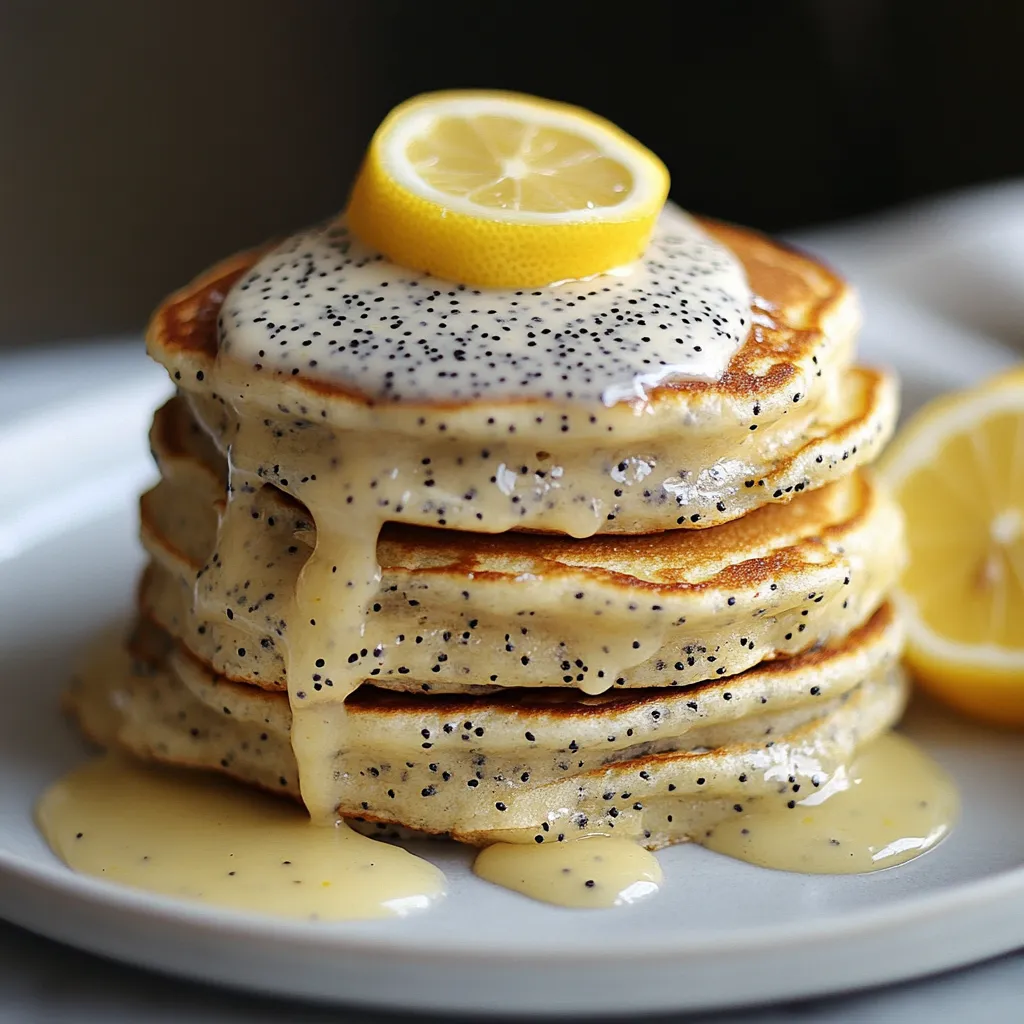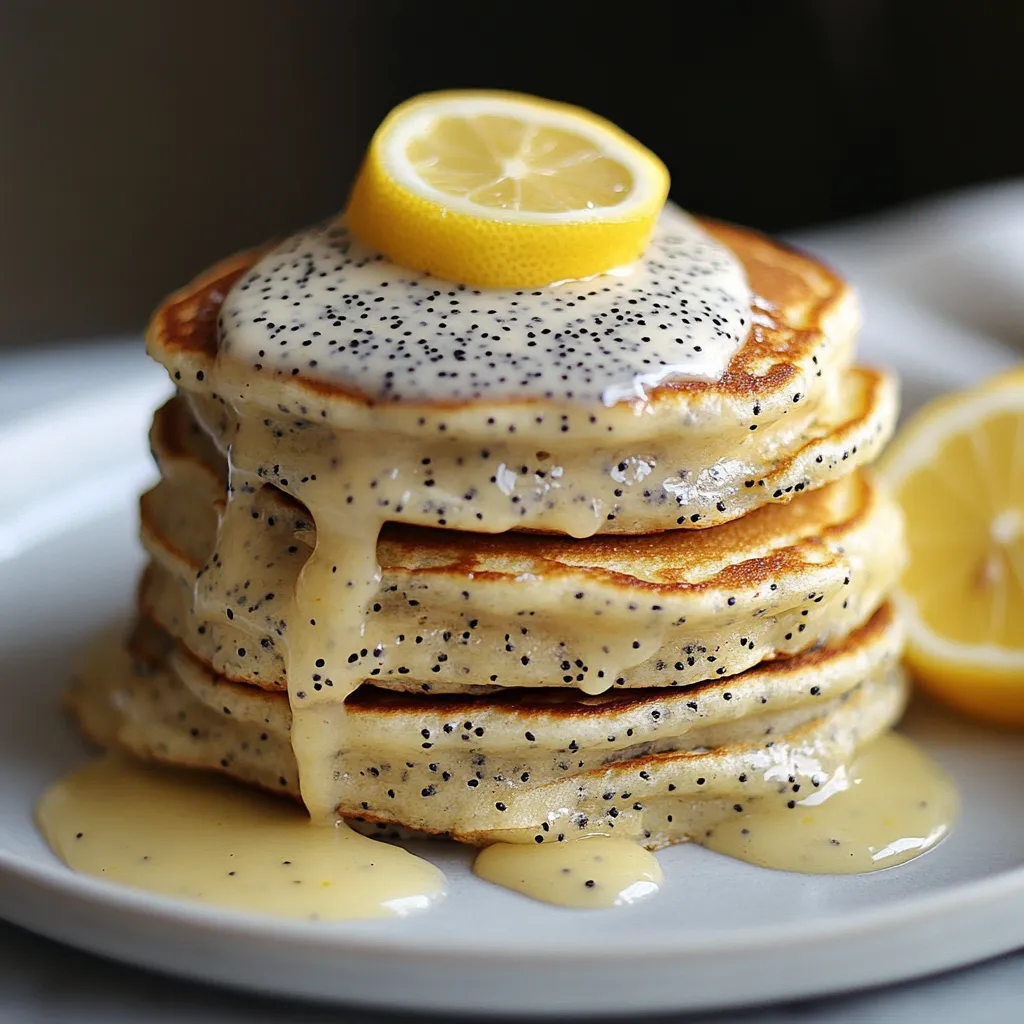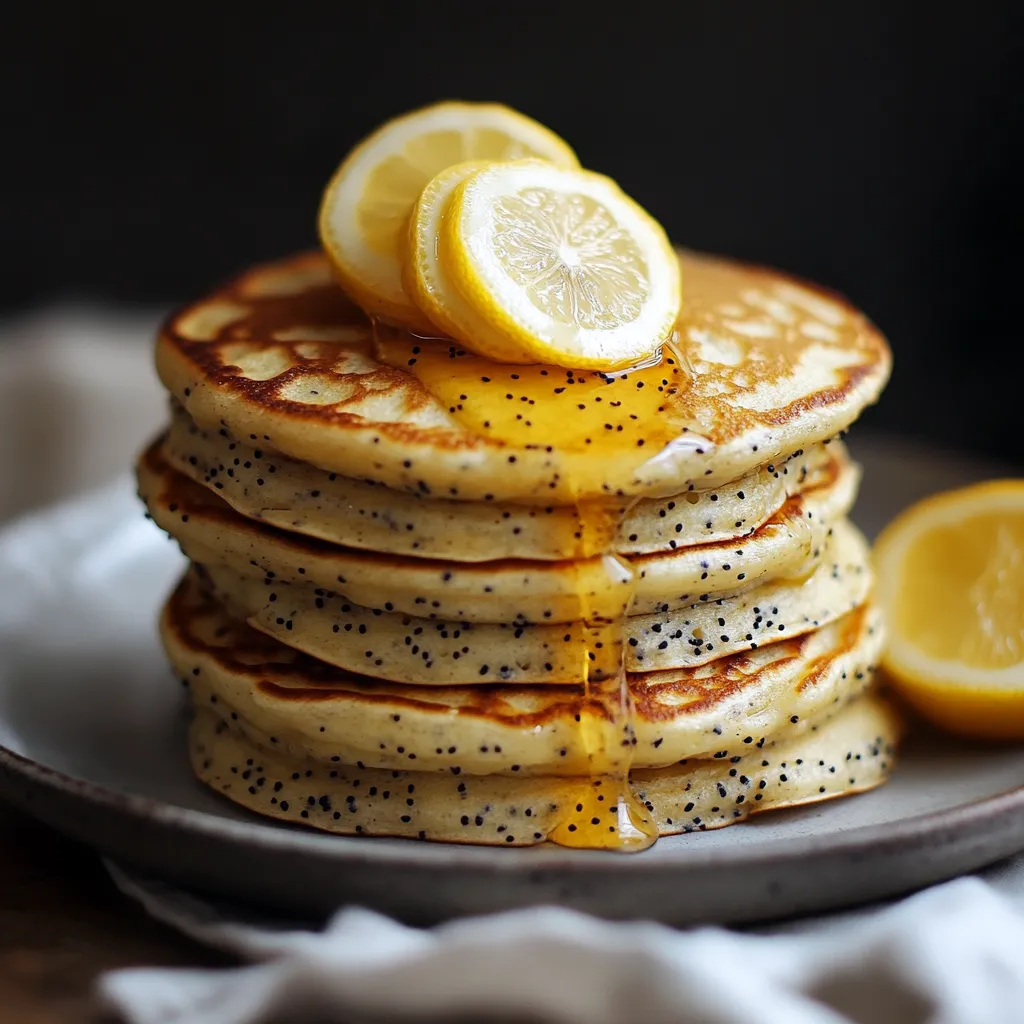 Pin it
Pin it
Lemon Poppy Seed Pancakes brighten any morning with their vibrant citrus flavor and delicate texture. These pancakes transform an ordinary breakfast into something special, combining the aromatic zest of fresh lemons with the subtle crunch of poppy seeds. The result is a stack of golden, fluffy pancakes that balance tanginess and sweetness perfectly.
I stumbled upon this recipe during a spring brunch gathering and have made it countless times since. My children request these pancakes almost weekly now, and guests always ask for the recipe when I serve them.
Ingredient Selection
- All purpose flour: provides the perfect structure without becoming heavy
- Poppy seeds: add a gentle crunch and visual appeal to each bite
- Sugar: balances the tartness of lemon without making pancakes too sweet
- Baking powder and baking soda: work together to create maximum fluffiness
- Salt: enhances all flavors and balances the sweetness
- Milk: creates a tender texture in every pancake
- Fresh lemon zest: contains essential oils that bring bright citrus flavor
- Lemon juice: adds tanginess and activates the leavening agents
- Eggs: bind everything together while adding richness
- Melted butter: contributes flavor and prevents sticking
- Vanilla extract: adds depth and complements the lemon beautifully
Cooking Method
- Mixing Dry Components:
- Combine flour, poppy seeds, sugar, baking powder, baking soda, and salt in a large bowl. Whisk thoroughly to ensure even distribution of leavening agents throughout the mixture.
- Preparing Wet Elements:
- In a separate bowl, gently whisk milk, freshly grated lemon zest, freshly squeezed lemon juice, eggs, melted butter, and vanilla extract until completely incorporated. The mixture should appear smooth with visible flecks of bright yellow zest.
- Creating The Perfect Batter:
- Pour wet ingredients into dry ingredients and fold together using a spatula with a light hand. Continue folding just until no dry flour remains visible. Small lumps are actually desirable for the fluffiest texture. Allow batter to rest for 5 minutes to activate leavening agents.
- Cooking Process:
- Heat a nonstick skillet or griddle over medium heat until drops of water sizzle when flicked onto the surface. Lightly grease with butter or cooking spray. Pour quarter cup portions of batter onto the hot surface, leaving space between each pancake for easy flipping. Watch for bubbles to form across the surface, particularly around edges. When bubbles begin to pop and edges appear set, gently flip each pancake. Cook until golden brown on second side and pancake springs back when lightly touched.
- Finishing Touches:
- Transfer finished pancakes to warmed plates immediately or keep warm in oven at 200°F while cooking remaining batter. Serve with preferred toppings for maximum enjoyment.
 Pin it
Pin it
The lemon zest has become my favorite ingredient in this recipe. My grandmother always said good zest makes all the difference in citrus baking, and she was absolutely right. When I make these pancakes with extra zest, everyone notices the bright flavor immediately and appreciates that sunshine burst in every bite.
Perfect Pairings
Consider serving these zesty pancakes alongside crispy bacon for a delightful sweet and savory contrast. Fresh fruit compote made from seasonal berries complements the lemon flavor beautifully. For special occasions, whipped mascarpone cheese with a touch of honey creates an elegant topping that transforms these pancakes into a sophisticated brunch centerpiece.
Recipe Adaptations
Try substituting whole wheat flour for half the all purpose flour to add nutritional value and a slightly nutty flavor profile. For dairy free versions, unsweetened almond milk works wonderfully in place of regular milk. Consider adding blueberries or raspberries to the batter just before cooking for fruity bursts throughout each pancake. Those watching sugar intake can reduce the sugar and serve with fresh berries instead of syrup.
Keeping Leftovers Fresh
Store completely cooled pancakes in an airtight container with parchment paper between layers to prevent sticking. Refrigerate for up to three days for best quality. Reheat in a toaster for the crispiest edges or microwave briefly for soft texture. These pancakes also freeze beautifully when wrapped individually and placed in freezer bags. Simply pop frozen pancakes directly into the toaster for a quick weekday breakfast.
 Pin it
Pin it
This lemon poppy seed pancake recipe has become a cornerstone in my breakfast repertoire because it consistently delivers both comfort and brightness. The balance of tart lemon with subtle sweetness creates a magical eating experience that somehow feels both indulgent and refreshing. Whether making these for loved ones or enjoying a quiet breakfast alone, these pancakes bring a moment of sunshine to the table.
Frequently Asked Questions
- → Can I make the pancake batter ahead of time?
- You can prepare the dry ingredients ahead of time, but it's best to mix in the wet ingredients just before cooking. If you need to make the complete batter ahead, store it in the refrigerator for up to 1 hour, giving it a gentle stir before using.
- → What can I serve with lemon poppy seed pancakes?
- These pancakes pair wonderfully with fresh berries, particularly blueberries or strawberries. They're also delicious with a dollop of whipped cream, a sprinkle of powdered sugar, or a drizzle of honey instead of traditional maple syrup.
- → Can I freeze leftover pancakes?
- Yes! Place cooled pancakes in a single layer on a baking sheet and freeze until solid. Then transfer them to a freezer bag or container with parchment paper between layers. Reheat in a toaster or microwave when ready to enjoy.
- → What if I don't have fresh lemons?
- While fresh is best for optimal flavor, you can substitute bottled lemon juice for the fresh juice. For the zest, you can use dried lemon zest (about 1 teaspoon) or add an extra ½ teaspoon of lemon extract for flavor.
- → Can I make these pancakes dairy-free?
- Yes, you can substitute the milk with a plant-based alternative like almond or oat milk, and use melted coconut oil or a plant-based butter substitute instead of regular butter.
